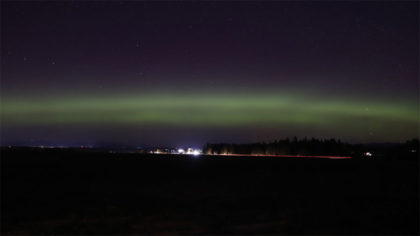

They do note the geostorms could also cause some problems here on Earth. The good news is the weather will cooperate with mainly clear skies Thursday night so if the aurora is indeed visible in our area you will be able to see it." As is usually the case, the highest chances of seeing this are across Alaska and southern Canada well to our north. According to the University Of Alaska's Aurora Forecast, the northern half of our viewing area has the best chance of seeing it locally, but even places as far south as North Carolina have a slight chance of seeing it low on the horizon.

Thursday night will be the best chance of seeing the aurora. "Today the Space Weather Prediction Center is predicting a strong geomagnetic storm (G3) due to several coronal mass ejections from the sun combining and hitting the earth's atmosphere. Here's what the 6abc AccuWeather Team has to say: ET on October 30, according to the NOAAs predictions. So what are the chances we'll be able to see it in our area? The strongest part of the storm and the best time to see the Northern Lights is expected to arrive between 5 and 8 p.m. That means if weather permits, people as far south from the polar region as Pennsylvania, New Jersey, Iowa and Oregon may be able to see the light show Thursday and Friday nights. According to NOAA, those storms could shift the aurora borealis, a stunning display of color from energized particles at the Earth's poles also known as the northern lights, further south.


 0 kommentar(er)
0 kommentar(er)
